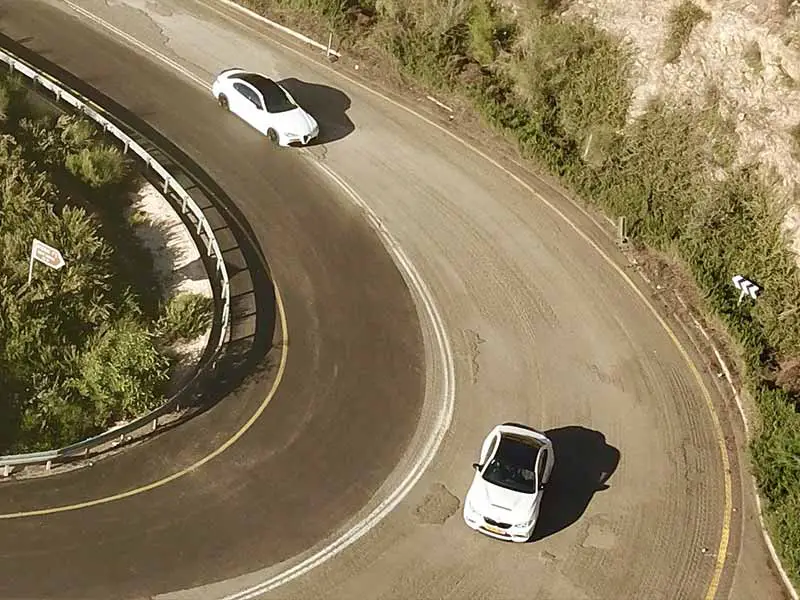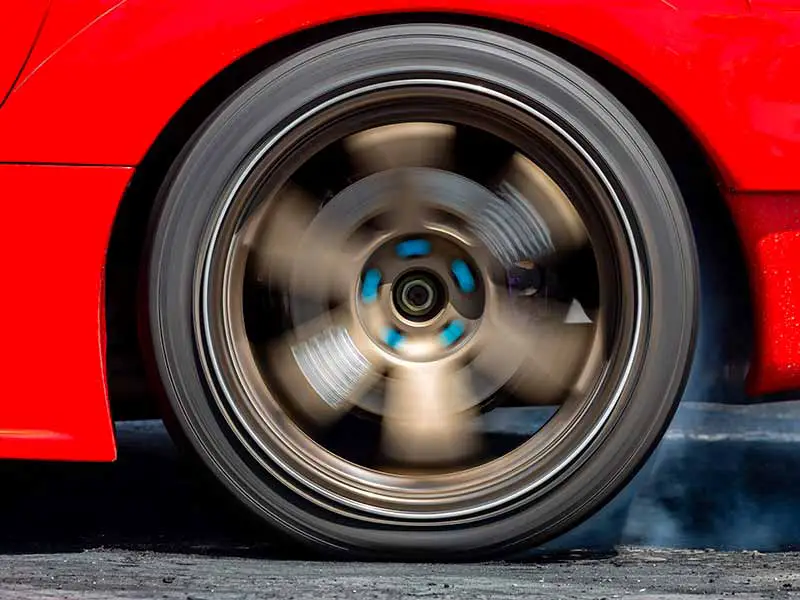Did you know that the tires on high-performance sports cars, luxury sedans, and powerful trucks are specifically designed to handle speeds of up to 186 mph (300 km/h)?
The Y tire speed rating on these tires is not only a testament to their high-speed capabilities, but it also plays a vital role in the overall performance, handling, and safety of your vehicle.
Y Speed Rating
The Y speed rating is a classification given to tires designed for high-performance vehicles, capable of safely handling speeds up to 186 mph (300 km/h).
This tire speed rating is important for cars and trucks that require that can dissipate the incredible heat generated at these high speeds.
In this article, we’ll explore the Y speed rating in depth, discuss how it compares to other speed ratings, and provide essential tire maintenance and safety tips to help you get the most out of your Y-rated tires.
Let’s take a closer look.
Y Speed Rating
The Y-rating is a classification given to tires designed for high-performance vehicles. Tires rated Y are capable of handling speeds up to 186 mph (300 km/h). It’s essential to understand that these tires are developed for specific vehicle types and driving conditions. Now, let’s dive into the details of this rating and why it matters.
Top Speed for Y-Rated Tires
- Y-rated tires are built for high-speed driving and can safely handle speeds up to 186 mph (300 km/h).
- Keep in mind that this doesn’t mean you should drive at these speeds – always follow the speed limits and drive responsibly.
Types of Vehicles that Use Y-Rated Tires
Y-rated tires are commonly found on high-performance vehicles like sports cars, luxury sedans, and some trucks with powerful engines. These vehicles require tires that can keep up with their high speeds and provide excellent handling capabilities. Examples of cars that may come with Y-rated tires include:
- High-end sports cars like Ferrari, Lamborghini, and Porsche
- Luxury sedans like BMW M-Series, Mercedes-Benz AMG, and Audi S/RS models
- Performance-oriented trucks like Ford F-150 Raptor and Ram 1500 TRX
When to Choose Y-Rated Tires
Consider Y-rated tires if:
- You drive a high-performance vehicle that requires tires capable of handling high speeds and improved handling
- You frequently drive on highways or in conditions where your vehicle’s performance capabilities are needed
- Your vehicle’s manufacturer recommends Y-rated tires for optimal performance and safety
Remember that it’s crucial to choose the right tires for your vehicle and driving needs. While Y-rated tires are designed for high-speed performance, they may not be the best choice for every driver.

Factors to Consider When Choosing Y-Rated Tires
Selecting the right tires for your vehicle is essential for safety, performance, and overall driving satisfaction. Y-rated tires might be a great option for those who drive high-performance vehicles, but there are several factors to consider before making a decision. Here’s a list of essential factors to help you determine if Y-rated tires are the right fit for your needs.
Vehicle Type and Model
- Always refer to your vehicle’s owner manual for the manufacturer’s recommended tire specifications, including speed rating.
- Make sure to choose a tire that meets or exceeds the speed rating required for your vehicle to ensure safety and optimal performance.
- Keep in mind that fitting a tire with a lower speed rating than recommended may affect your vehicle’s handling and stability, as well as void its warranty.
Driving Conditions and Habits
- Evaluate the typical driving conditions you encounter, such as highways, city roads, or off-road terrain.
- Consider your driving habits – do you drive aggressively, or are you a more cautious driver?
- If you often drive at higher speeds or in challenging conditions, Y-rated tires can provide better handling, stability, and responsiveness compared to lower-speed-rated tires.
- However, if you primarily drive at moderate speeds or in urban environments, a tire with a lower speed rating might be more suitable for your needs.
Safety and Performance Benefits
- Y-rated tires are specifically designed for high-speed driving, offering improved handling, better cornering, and shorter braking distances.
- These tires often feature specialized tread patterns and compounds that provide better grip and stability at high speeds.
- Keep in mind that Y-rated tires may have a shorter lifespan compared to lower-speed-rated tires, as they are typically built with softer rubber compounds for better traction.
By evaluating your vehicle type, driving conditions, and habits, you can make an informed decision about whether Y-rated tires are the best choice for your needs.

Comparing Y Speed Rating to Other Speed Ratings
Understanding the differences between various speed ratings is crucial when selecting the right tires for your vehicle. While Y-rated tires are designed for high-performance vehicles, there are many other speed ratings available that cater to different vehicle types and driving conditions. Let’s take a closer look at some common speed ratings and how they compare to Y-rated tires.
Overview of Common Tire Speed Ratings
- S-rated tires: Suitable for family cars, minivans, and light trucks with a maximum speed of 112 mph (180 km/h)
- T-rated tires: Designed for family sedans and vans with a maximum speed of 118 mph (190 km/h)
- H-rated tires: Ideal for sporty sedans and coupes with a maximum speed of 130 mph (210 km/h)
- V-rated tires: Suitable for sports cars and luxury sedans with a maximum speed of 149 mph (240 km/h)
- W-rated tires: Designed for high-performance vehicles with a maximum speed of 168 mph (270 km/h)
- Y-rated tires: Ideal for high-performance sports cars, luxury sedans, and some powerful trucks with a maximum speed of 186 mph (300 km/h)
Tire Speed Rating Chart for Quick Reference
- S: 112 mph (180 km/h)
- T: 118 mph (190 km/h)
- H: 130 mph (210 km/h)
- V: 149 mph (240 km/h)
- W: 168 mph (270 km/h)
- Y: 186 mph (300 km/h)
Choosing the Right Speed Rating Based on Your Needs
- Determine the speed rating recommended by your vehicle’s manufacturer in the owner’s manual.
- Consider your driving habits and typical driving conditions to select a suitable speed rating.
- Higher speed-rated tires offer better performance and handling but may have a shorter lifespan compared to lower-speed-rated tires.
- Consult a trusted tire professional for personalized recommendations.

Tire Maintenance and Safety Tips
Proper tire maintenance is crucial for ensuring the safety and longevity of your tires, regardless of their speed rating. Regular maintenance can help you get the most out of your Y-rated tires, as well as any other type of tire you choose for your vehicle. Follow these essential tire maintenance and safety tips to keep your tires in top condition and maintain optimal performance.
Importance of Proper Tire Inflation
- Regularly check your tire pressure to ensure they are inflated according to the manufacturer’s recommendations.
- Correct tire inflation helps improve fuel efficiency, handling, and overall tire life.
- Overinflated tires can lead to a harsh ride and uneven tire wear, while underinflated tires can cause increased rolling resistance, poor handling, and a higher risk of tire failure.
Regular Tire Inspections and Rotations
- Inspect your tires frequently for signs of damage, such as cuts, punctures, or bulges.
- Look for uneven tread wear, which can indicate problems with alignment or suspension.
- Rotate your tires according to the manufacturer’s recommendations, usually every 5,000 to 8,000 miles, to promote even tread wear and extend tire life.
Recognizing Signs of Tire Wear and Damage
- Monitor your tire tread depth to ensure it meets the legal minimum requirements (typically 2/32 of an inch or 1.6 mm).
- Use the “penny test” to check tread depth: Insert a penny into the tread with Lincoln’s head upside down, and if the top of his head is visible, it’s time for new tires.
- Replace your tires if you notice visible signs of damage or if they have reached the end of their lifespan, as indicated by the tread wear indicators on the tire.
By following these tire maintenance and safety tips, you can ensure your Y-rated tires – or any other tires you choose – perform at their best and provide a safe, enjoyable driving experience.

Resources
Below are some links you may find helpful when learning about tires
Final Thoughts
As we’ve discovered, the Y speed rating is a crucial aspect of high-performance tires, allowing vehicles like sports cars, luxury sedans, and powerful trucks to safely reach speeds of up to 186 mph (300 km/h).
The key takeaway from this article is that choosing the right tire for your vehicle involves considering factors such as vehicle type, driving conditions, and habits, as well as proper tire maintenance to ensure optimal performance and safety.
Remember the words of racing legend Mario Andretti: “Tires are like shoes; they’re the first thing to touch the ground and the first thing to get worn out.” With this in mind, always prioritize the right tire selection and maintenance to enjoy a safer, more enjoyable driving experience.
Good luck and happy motoring.




